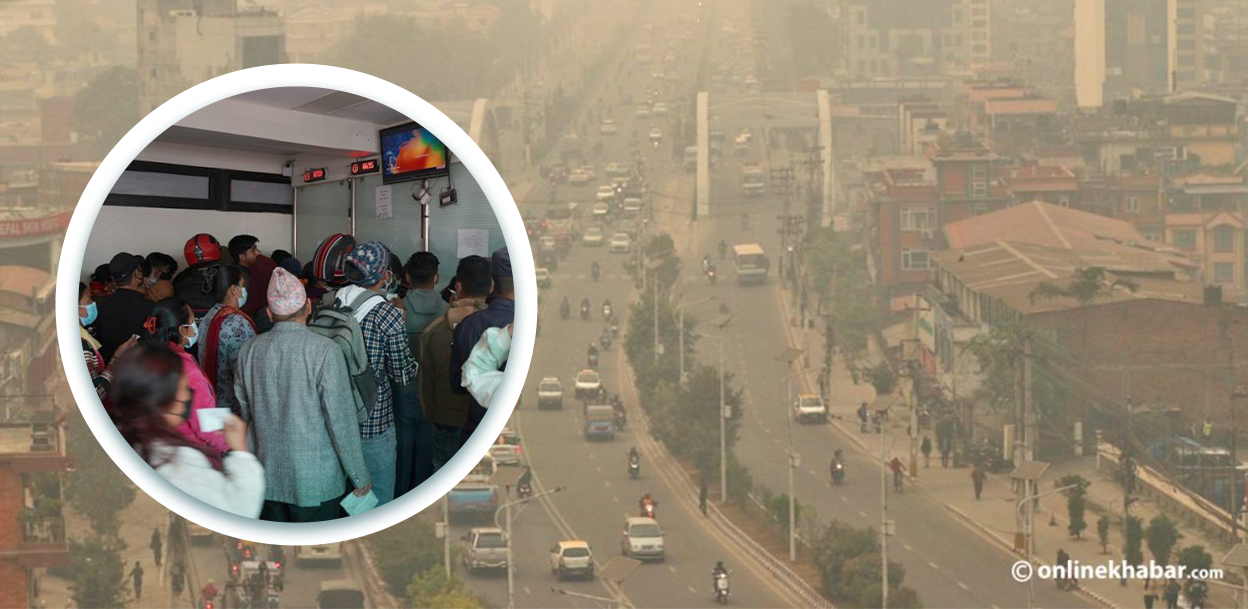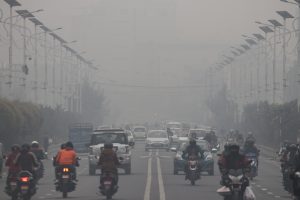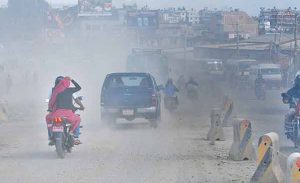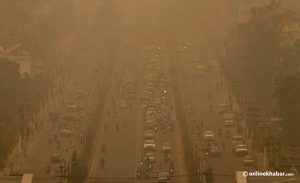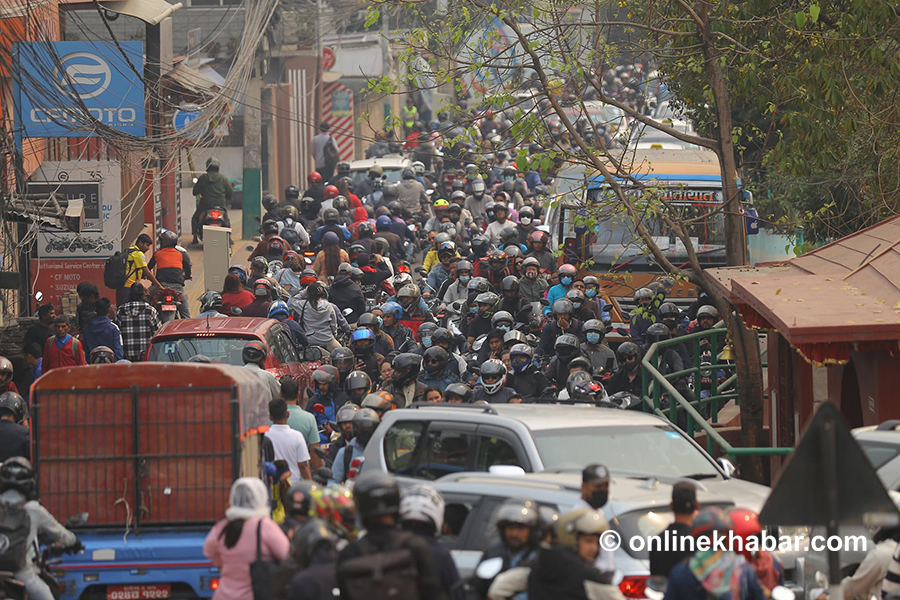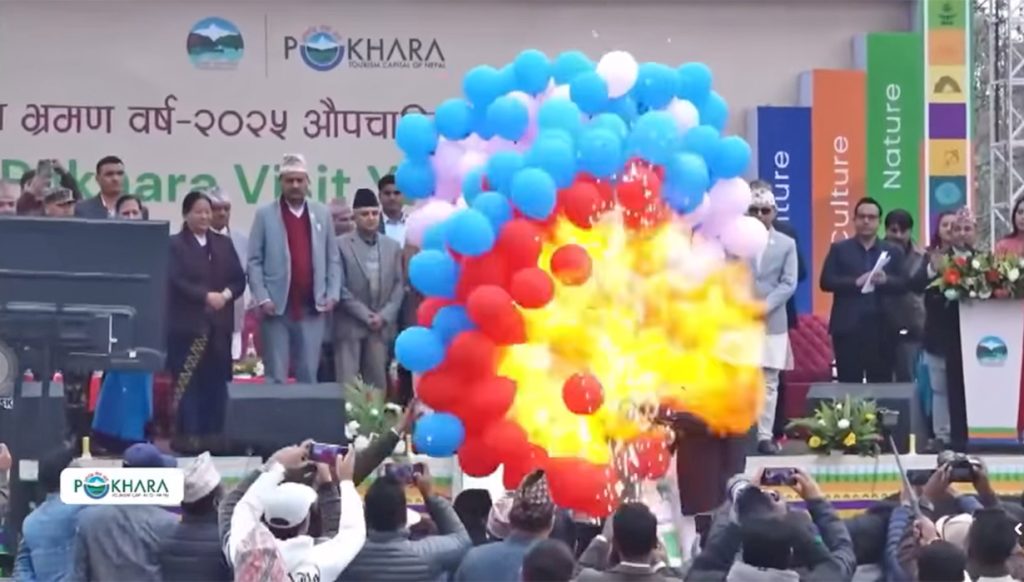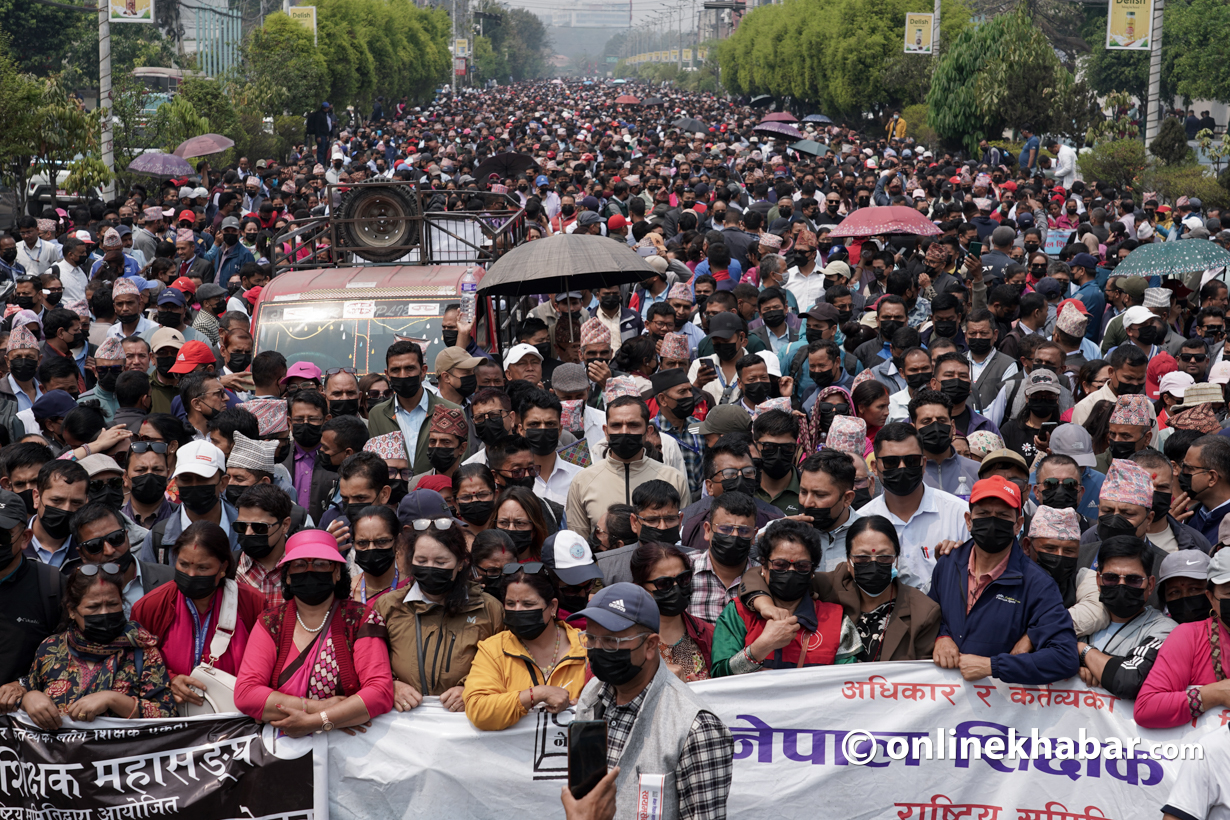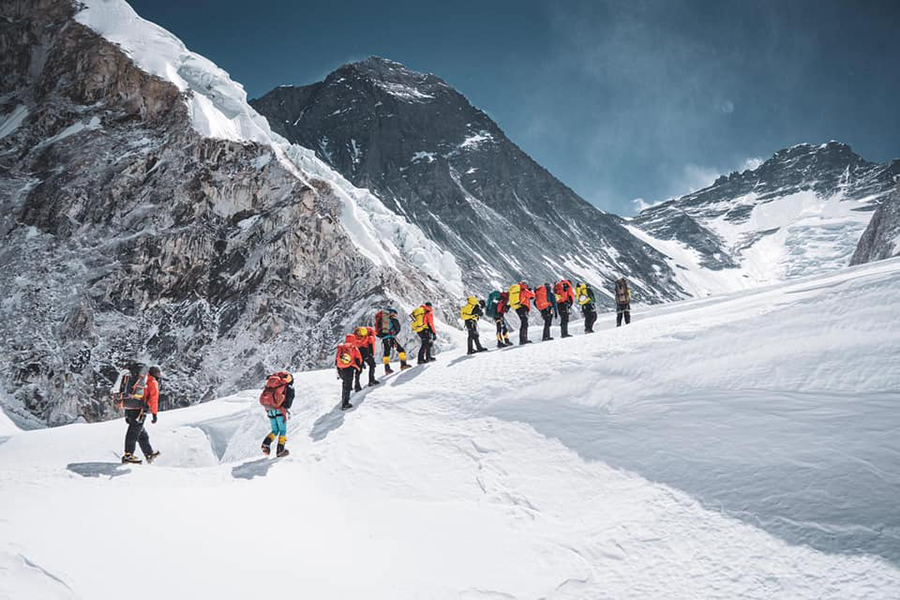
Nepal, particularly Kathmandu Valley, is facing an alarming environmental crisis in the form of severe air pollution. With pollution levels reaching hazardous levels, this issue has not only posed a threat to public health but is also deteriorating the country’s natural resources and ecosystem. It is time to delve into the causes, current statistics, impacts, and potential solutions to mitigate this growing environmental threat.
According to the Air Quality Index (AQI), as of April 3, 2025, Kathmandu’s air quality has reached 348, placing it in the “hazardous” category. AQI values in this range represent an extremely unhealthy air quality, which poses serious health risks to the general population, particularly for vulnerable groups such as children, the elderly, and individuals with pre-existing respiratory conditions.
The primary contributors to this hazardous air quality are forest fires, vehicular emissions, and dust pollution from construction activities. According to data from the Ministry of Forests and Environment, over 2,000 forest fires have been reported across the country this year, exacerbating the pollution levels. The International Centre for Integrated Mountain Development (ICIMOD) has pointed out that the prolonged dry season, coupled with stagnant atmospheric conditions, is contributing to the frequent occurrence of forest fires.
Sources of pollution
- Forest Fires: Forest fires have emerged as one of the major sources of particulate matter (PM2.5) in the atmosphere. According to Nepal’s Department of Environment, 40% of the air pollution in the Kathmandu Valley in recent weeks has been attributed to wildfires. These fires not only release carbon dioxide but also emit harmful particulate matter that directly affects respiratory health.
- Vehicular Emissions: Kathmandu, with a population of over 1.5 million, faces significant traffic congestion. According to the Kathmandu Valley Road Improvement Project (KVRIP), there are over 800,000 registered vehicles in the valley. These vehicles, particularly old and poorly maintained ones, emit large quantities of nitrogen oxides (NOx), carbon monoxide (CO), and particulate matter (PM10, PM2.5). Vehicular emissions are a significant contributor to 55% of the air pollution in the valley, as reported by the Clean Energy Nepal (CEN).
- Construction Activities and Dust Pollution: Dust from construction sites contributes substantially to air pollution in Kathmandu. According to an assessment by the Kathmandu Metropolitan City, dust from construction sites accounts for 30% of the particulate matter in the air, particularly during the dry months.
- Other Industrial Activities: Industrial activities, including brick kilns, which are prevalent in the surrounding areas, contribute to air pollution by releasing smoke and particulate matter into the atmosphere. Brick kilns are reported to release over 120,000 tons of CO2 per year, further aggravating air quality conditions.
Health impacts
The air pollution in Nepal is having a detrimental impact on public health. According to the World Health Organization (WHO), air pollution is responsible for over 4,000 premature deaths annually in Nepal, with cardiovascular diseases and respiratory illnesses being the leading causes of death due to exposure to airborne pollutants. The fine particulate matter (PM2.5) in the air can penetrate deep into the lungs and enter the bloodstream, leading to long-term health issues such as chronic obstructive pulmonary disease (COPD), asthma, and lung cancer.
In addition to respiratory issues, air pollution has been linked to cardiovascular diseases, particularly in those who are regularly exposed to high pollution levels. According to the Nepal Health Research Council (NHRC), the prevalence of heart disease in Kathmandu has risen by 15% over the past decade, which can be partially attributed to prolonged exposure to polluted air.
Mitigation measures
In response to the rising pollution levels, several mitigation strategies have been proposed and are in various stages of implementation:
- Control of Vehicular Emissions: The government has introduced stricter emissions standards for vehicles, particularly in urban areas like Kathmandu. The introduction of an odd-even system for vehicles, as suggested by environmental experts, could significantly reduce vehicular emissions. Such measures are in line with global practices, where similar strategies have reduced urban air pollution by up to 25% in cities like Beijing and Delhi.
- Forest Fire Management: The government, in collaboration with non-governmental organizations, is working on improving forest fire management through early detection systems and community-based fire prevention programs. The introduction of aerial firefighting techniques has shown promise in reducing the intensity of forest fires in countries like Australia and the United States.
- Promotion of Clean Energy: The adoption of cleaner energy sources, such as solar and wind power, could significantly reduce the dependence on fossil fuels and reduce vehicular emissions. According to the Nepal Renewable Energy Development Board (NREDB), solar energy capacity has increased by 20% in the last year alone.
- Public Awareness and Policy Development: Raising public awareness about the health risks of air pollution and encouraging the use of public transport, carpooling, no waste burning, proper management of construction and demolition wastes and cycling is essential. The Ministry of Health and Population has issued advisories urging people to limit outdoor exposure, wear protective masks, and install air purifiers in indoor spaces. Additionally, the introduction of “Green Zones” in Kathmandu, where high-emission vehicles are restricted, could help reduce the pollution levels.
Nepal’s air pollution crisis is a multifaceted problem that requires immediate and coordinated efforts from the government, industries, and the public. With the rising number of forest fires, traffic congestion, use of fossil fuels in vehicles, lack of proper maintenance and servicing of vehicles, waste burning and dust pollution from construction and demolition work, Kathmandu’s air quality has reached hazardous levels, causing severe health risks.
Addressing this crisis will require stringent emission regulations, improved forest fire management, cleaner energy solutions, and a comprehensive public awareness campaign. The future of Kathmandu’s air quality depends on our government’s collective efforts to reduce pollution at its source and protect public health.





